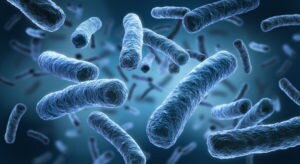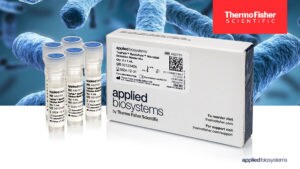
As the biopharma space continues to advance, the need for adventitious agent testing in biologics manufacturing workflows is apparent. More complex modalities and manufacturing processes have made each product a larger investment of time, energy, and patient trust, so thorough biosafety procedures are essential for every developer. Testing for adventitious agent contamination is one of the most critical elements of safe biologics manufacturing. In this blog, we’ll highlight why adventitious agent testing is so important in manufacturing of vaccines, monoclonal antibodies (mAbs), cell therapies, and other biologics, approaches to testing, and solutions for overcoming common challenges in the process.
The Risks of Biopharmaceutical Manufacturing Contaminants
Adventitious agents are microorganisms that have been unintentionally introduced into the manufacturing process of a biological therapeutic agent. The category encompasses a broad range of biopharmaceutical manufacturing contaminants, including bacteria, viruses, fungi, mycoplasma, mycobacteria, parasites, and more. Adventitious agents can inadvertently enter therapeutics through materials of animal or human origin that are used in production, such as cell substrates or bovine serum, through cell lines themselves, or by manufacturing operators. In many instances, mitigation strategies including selection of lower-risk materials or viral clearance methods like heating or low pH can mitigate risk early in the manufacturing process.
Testing prior to release is more than a means of preventing unsafe lots from reaching patients— it prevents production slowdowns and shortages of necessary treatments while helping maintain public and regulatory confidence in drug providers. Investigation, corrective action, and manufacturing downtime related to contamination can ultimately cost a company tens of millions of dollars, making effective prevention strategies and comprehensive testing imperative for biologics manufacturing. However, because contamination can occur at any stage from cell bank to fill/finish, testing at multiple timepoints is essential to maintain both product safety and workflow efficiency. While testing a final product prior to batch release can help ensure contaminated products do not reach the market, undetected contamination earlier in the manufacturing workflow can lead to wasted investments of time, cost, and effort.
Approaches to Adventitious Agent Testing
Adventitious agent detection methods can vary by testing stage, biological substrate, and microorganism of interest. Viruses, mycoplasma, and bacteria can be broadly detected by monitoring changes in cultured cell health or by conducting hemadsorption or hemagglutination assays in vitro. Transmission electron microscopy (TEM) of samples can also visually identify adventitious agent contamination, particularly in the case of little-known or difficult-to-detect microbes. Polymerase chain reaction (PCR) and immunoassays such as enzyme-linked immunosorbent assays (ELISA) are long-standing and reliable methods for detecting specific microbes of interest. PCR-based assays for reverse transcriptase are also essential for the detection of retroviral contamination.
Challenges in Selecting Detection Methods
Despite the wealth of options available for adventitious agent testing, many challenges remain in selecting an appropriate detection method. In order to comprehensively assess biopharmaceutical manufacturing contaminants, a testing method must be able to detect multiple targets, often at extremely low levels. This can make the detection process labor intensive and time-consuming, ultimately limiting manufacturing efficiency. Additionally, inhibitors commonly found in cell culture medium, sample preparation and purification reagents, or on consumables can prevent amplification of nucleic acids, compromising the sensitivity of PCR-based detection assays. For groups developing a biological therapeutic, changing regulatory requirements at every level can also introduce new challenges when moving from discovery to commercialization. There is thus no “one-size-fits-all” approach to adventitious agent detection, but choosing the right partner in your testing solutions can help ensure you select the proper methods for your needs.
Thermo Fisher Scientific offers a portfolio of products and services to fit adventitious agent testing needs at every stage of development and manufacturing. The Applied Biosystems ViralSEQ and MycoSEQ Detection Systems offer total workflow solutions for the detection of common adventitious agents, from sample preparation to data analysis. The MycoSEQ detection system provides sensitive detection of more than 90 mycoplasma species. ViralSEQ Detection System kits provide GMP-compliant, end-to-end solutions for accurate real-time PCR quantification of Sf Rhabdovirus, Mouse Minute Virus, and Vesivirus.
However, many customers need a solution to detect novel biopharmaceutical manufacturing contaminants beyond common viruses and mycoplasma covered by ViralSEQ and MycoSEQ kits. For optimal confidence in contamination-free drug products, the Applied Biosystems QualTrak ecosystem offers qPCR tools for rapid, ultra-sensitive microbial detection – including QuanStudio instruments, microbial detection assays, and Applied Biosystems Taqpath Bactopure Microbial Detection Master Mixes.
Designed for applications in quality control testing, Bactopure Master Mix is ultra-purified to remove background DNA, helping provide the lowest limit of detection across common bacterial, viral, mammalian, fungal, and antibiotic resistance markers. Providing optimal consistency and sensitivity to as few as one copy/uL of microbial DNA targets, Bactopure’s proprietary formula helps ensure robust performance even in the presence of common inhibitors such as heparin, hematin, or humic acid. All Bactopure Master Mix lots are functionally tested to guarantee consistency and wide dynamic range across a variety of assays and sample concentrations. Bactopure Master Mix is also optimized for multiplexing, available in formulations that enable single- to four-target detection reactions to maximize efficiency.
Read the application note: Advancing biopharma QC testing with TaqPath BactoPure Microbial Detection Master Mix
For post-discovery qPCR applications, customizable TaqPath assays and probes can help meet unique detection needs and easily integrate into existing process development, QC, and clinical testing workflows. Biopharma users in the discovery phase to late-stage development and manufacturing can be secure in regulatory compliance, as the entire QualTrak suite of tools is produced in an ISO 13485-certified and FDA-registered facility under cGMP principles. The QualTrak digital workflow experience is also designed for optimal user experience across development and manufacturing. Automatable workflows and in-app assay selection help to guide customers in choosing the right products for their needs and efficiently execute testing. For customers in need of absolute quantification of low-level DNA and RNA targets, the QuantStudio Absolute Q Digital PCR System consolidates a multi-step, multi-instrument workflow into a one-step qPCR-like workflow. For adventitious agent testing needs across biopharma applications and phases, Thermo Fisher Scientific solutions can ensure consistent and sensitive contaminant detection.
Adventitious Agent Detection with Confidence
Testing for adventitious agent contamination is vital in the manufacturing of biopharmaceutical products. While the demands of effective testing can be daunting for any manufacturer, using the right instruments and reagents can offer the confidence of reliable and sensitive detection of even low levels of contamination.
 Ready to see how Thermo Fisher Scientific’s Bactopure Microbial Detection Master Mixes can improve your adventitious agent testing workflow?
Ready to see how Thermo Fisher Scientific’s Bactopure Microbial Detection Master Mixes can improve your adventitious agent testing workflow?
Request a 1-mL evaluation sample Bactopure Master Mix*
*Terms and conditions apply
For Laboratory Use.

Leave a Reply